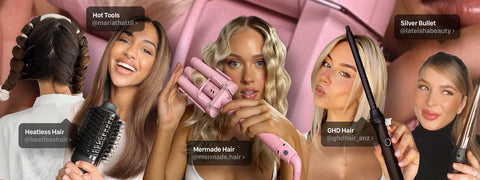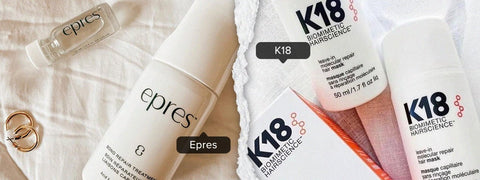If you are a millennial or younger, you are probably glued to the video-sharing app TikTok at least once a day. You also presumably know about a new trend getting plenty of attention - heatless curling ribbons.
The product has become so widespread even if you don't use TikTok you have likely heard about heatless curling ribbons.
Heatless hair curlers aren't new. So, why is everyone suddenly going bonkers for them? Is their reemergence just the cyclical nature of haircare?
The question we really want to answer is this - will these ribbons actually replace heated curlers?
Let's answer all these pressing questions. By the end of this article, we will give a definite answer about whether heatless curling ribbons are better than the heated alternative.
The History of Hair Curlers
People have loved curly hair for thousands of years. The first recorded use of hair curlers was in 1500 B.C. Ancient Egyptians would wrap their hair around wooden sticks and use the sun to complete the process. Ancient Greeks even had a specialised tool for the job: a calamistrum. This hollow tube made of iron was warmed in ashes and used roller-style.
In the 19th century, the curling iron was invented. However, this early version was heated over a gas burner and was used exclusively by professionals. With temperature regulation impossible, there was plenty of burnt hair and skin.
By the 20th century, there was an explosion of curlers: foam rollers with ammonia, steam rollers and perming treatments. These were still unreliable, so the innovations of the 21st century were welcomed by the entire industry.
Finally, sensitive temperature-controlled curlers were invented. This is where our narrative begins.
Heated Curlers
Heated curlers usually refer to cylindrical metal devices with a heating ability.
Common names include heated irons (e.g. Hot Tools Curling Iron), bars (e.g. Hot Tools Curling Bar), tongs, wands (e.g. Glampalm Magic Wand) and even hair rollers.
Whatever the case, tight or loose curls can be created. These products are staples in any salon and are found in many bathrooms, too.
Unfortunately, heated curlers have developed a reputation for damage. It's true that heat can change the shape of keratin strands - the protein that protects the hair. However, technology has advanced remarkably far from sizzling-hot metal instruments.
Nowadays, heated curlers are available with a range of safety features. There is a variable temperature control to prevent overheating the hair and specialised material for consistent warmth across the surface. Plus, an automatic sleep mode means more safety than ever.
You can even purchase heated curlers in various sizes to meet the needs of your hair. There is a 10mm curling iron for creating tight curls, and the other end of the spectrum includes an extra-large 32mm curling iron for quickly curling long hair.
As if that wasn't enough, heat protectants are available to defend against damage. The formula forms a film over each stand, and some brands even contain bonus benefits, such as UV protection.
If you are due a new heated curler it's good to invest in a high-quality heated curler. Having additional heat protectants ensures your hair remains healthy.
Pros of Heated Curlers
There are many benefits to using heated curling products. Let's summarise some of these below:-
- Create curls using a tried-and-tested method. Heated curlers have been evolving for thousands of years, and I expect they will continue for many more. there is a reason these products have survived, and that's because they truly work.
- Temperature control prevents the overuse of heat. You can now customise the temperature used on your device to minimise potential damage.
- Specialised material ensures consistent heating. Many high-quality heated curlers use specialised materials for consistent heating, such as ceramics or even 24k gold.
- Safety mode switches the device off after a set time. No more worrying about leaving the curler on.
- A range of sizes to suit all hair types and needs. Choose from 10mm for tight curls or 32mm for long curls.
- Double-down on hair health using a heat protectant. Thankfully, these nifty products create an invisible shield around the hair to prevent damage.
Cons of Heated Curlers
Despite plenty of technological innovation, there are a few disadvantages of heated curlers. Let's explore the potential negatives of heated curlers:- Good-quality electrical curlers are expensive. The price can range from $150-300, depending on the brand, although cheap products can wreak considerable damage.
- Heated curlers can still cause deterioration. Despite all the precautions, frequent use of these products will result in some dryness and frizz. We suggest investing in a hair repair product like those available from K18 if you use electrical styling tools often.
- Heated curlers can be time-consuming. Sectioning hair and individually wrapping these pieces around a curler is not quick. The process can take 30 minutes to two hours.
- There is a risk of burns. Although newfangled devices are equipped with incredible technology, they are still pieces of heated metal. Always handle curlers carefully to prevent accidental burns.
Where To Buy Heated Curlers
You can find heated irons, bars, tongs, wands and hair rollers online. Their abundance can be overwhelming. Luckily, AMR Hair & Beauty stocks reputable brands like GHD, Hot Tools Professional, Hi-Lift, and Silver Bullet.
You can choose from numerous colours and sizes packed with incredible benefits, such as temperature control, consistent heating, quick heating and safety features.
Heatless Curling Ribbons
At first glance, heatless curlers may sound like a better option. These nifty items are available in several forms, including velcro rollers, hair rollers and even specialised curly hair products.
However, the version on TikTok features a long flexible rod with a fabric exterior called a curling ribbon. The process involves placing the rod over damp hair like a headband. Then, the hair is twisted around the rod and secured at the ends using scrunchies. It's a simple technique, but thousands of happy customers are showcasing their fabulous curls online. The price range of $15-50 would make me smile, too.
Are there any downsides?
I've identified several possible dealbreakers. Firstly, there is the usage time. Curling ribbons take several hours to create curls. However, this duration will depend on the length and thickness of the hair. In fact, many users recommend sleeping with this product attached to the hair. Yet, if you are a side sleeper or even a troubled sleeper, you are already shaking your head. That long and flexible rod won't be comfortable at all.
There is also the matter of curl quality. Unfortunately, curling ribbons don't allow for full curl customisation. Although you can tighten curls by wearing the rod for longer, the technique is unreliable. The type of curls you will receive is a complete surprise. it's not a great guarantee, especially if you are preparing for a big event.
Pros of Curling Ribbons
As a popular product, curling ribbons unsurprisingly boost a few perks. Whether this will allow them to beat trusted electrical curlers is undecided. Let's look at some of the pros:- You don't need heat. This is undoubtedly the biggest perk. In fact, anyone with delicate hair may switch to this product solely based on this feature. Nobody would blame you, either!
- Curling ribbons are inexpensive. Compared to electrical alternatives, this option is far more affordable. The average price range is $15-50.
- Safety is guaranteed. There is no risk of burns to the hair or fingers with this product.
Cons of Curling Ribbons
- Curling ribbons take several hours to create curls. The duration will depend on the length and thickness of the hair. Environmental conditions should also be considered.
- Overnight use is often encouraged, although some sleepers may find this uncomfortable. For side sleepers and troubled sleepers, wearing the rod throughout the night may not be possible.
- Curling ribbons don't allow for full curl customisation. The type of curls you will receive will be a surprise, which may not be ideal for big events.
Where To Buy Curling Ribbons
Due to their newness, heatless curlers are stocked by limited brands. One of the most reputable options appears to be an online store called Heatless Hair.
According to their website, they have applied for a patent. There are multiple colours to choose from, and a clip and scrunchies are included!
Heatless Curling Ribbon Vs. Heated Curler: The Result
After studying heatless curling ribbons and heated curlers, our verdict has been reached. The heatless curling ribbon exploded across Tiktok for a fantastic reason. They're a styling option that doesn't mean heat damage to the hair. Plus, they're considerably cheaper than heated curlers.
So, does this mean heatless curling is better than heated curling?
Unfortunately, we have to respond with a firm 'no'. Heatless curling ribbons are ideal for delicate hair, but the list of cons is too long. Their opponent is far quicker and more consistent.
The biggest detriment of heat damage is readily addressed through good-quality devices and heat-protecting products. It seems heated curlers are here to stay.
We give the win to heated curlers.






Comments (0)
There are no comments for this article. Be the first one to leave a message!